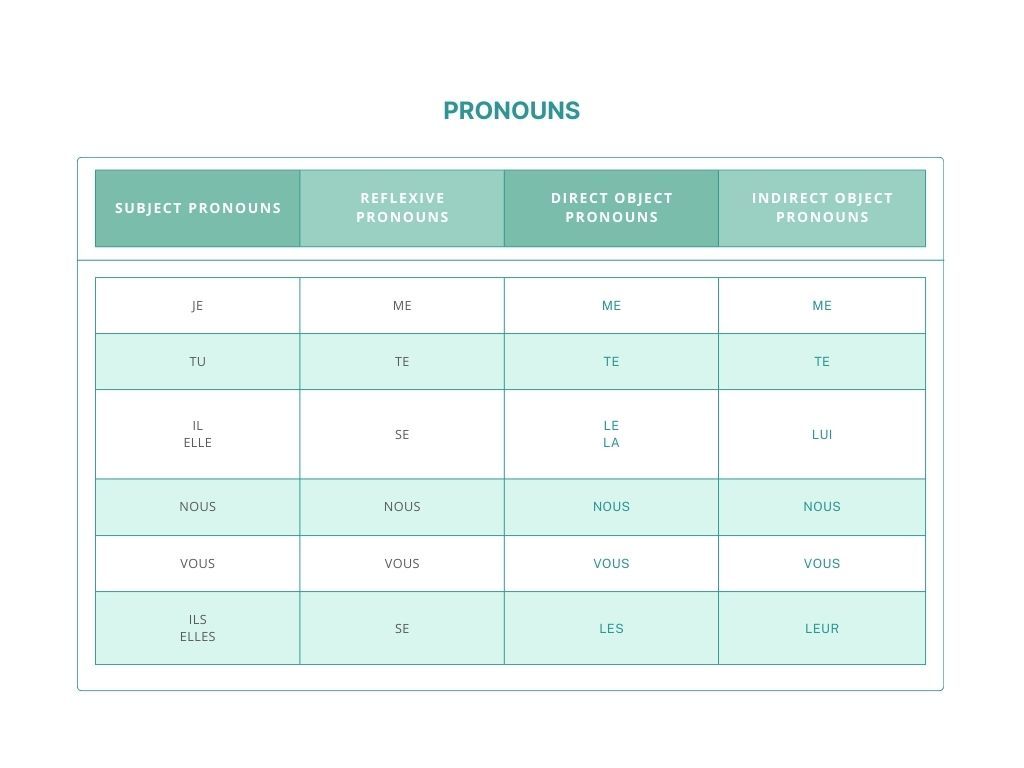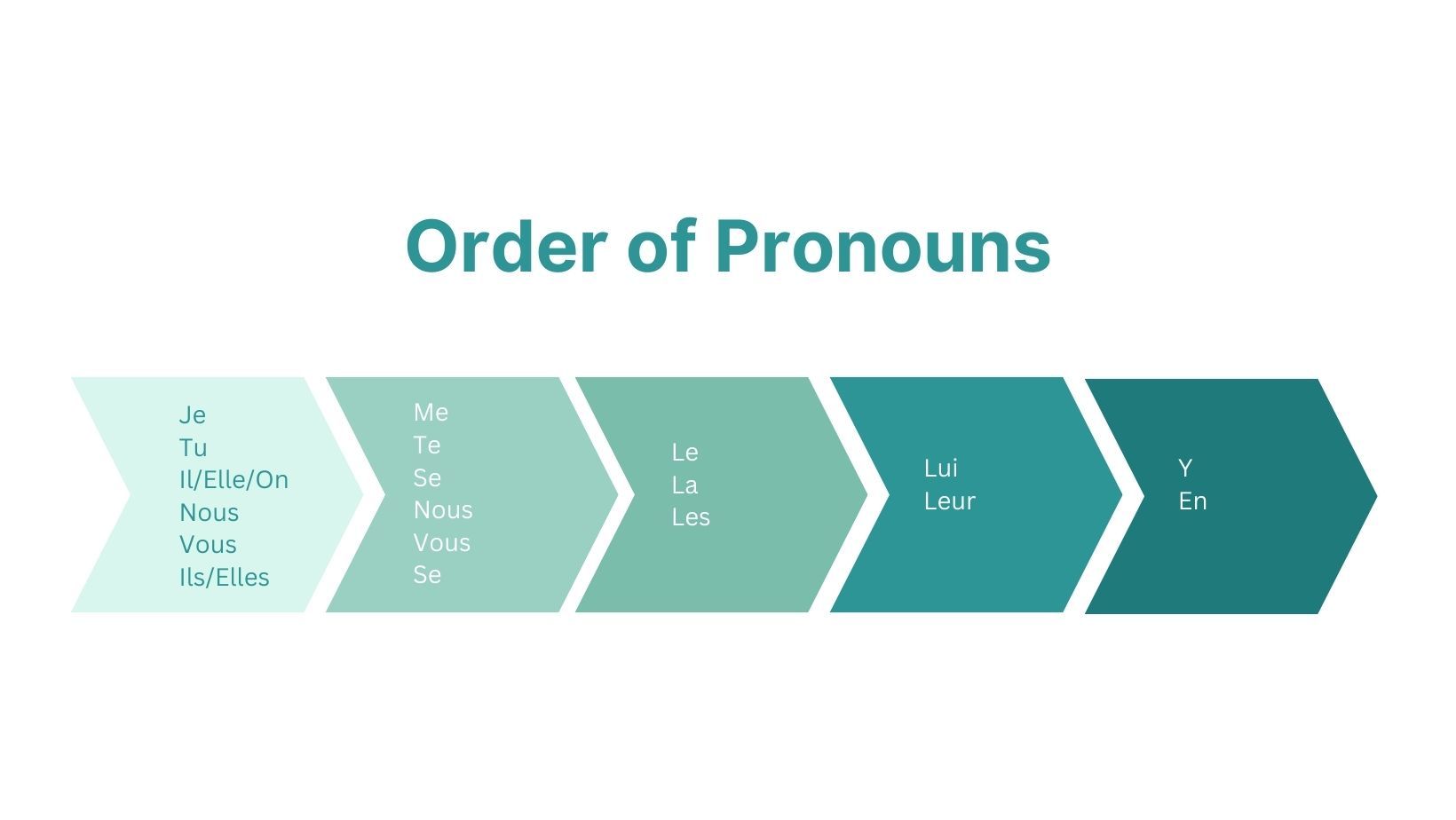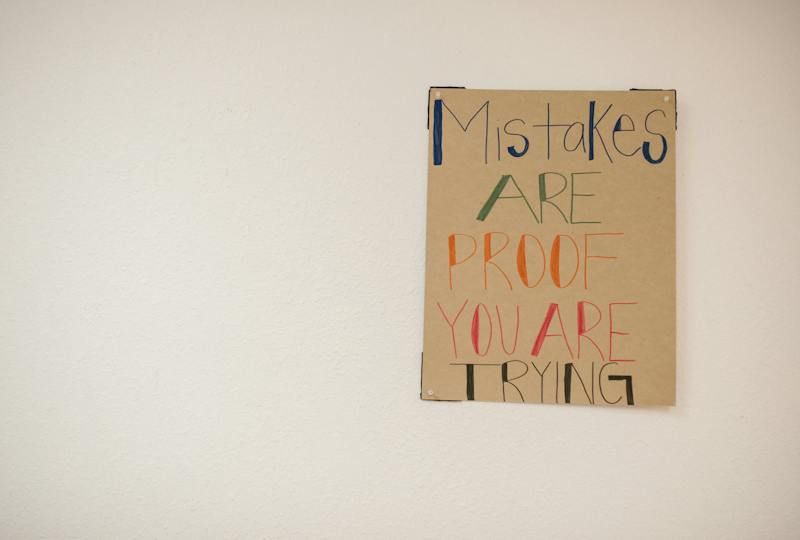French Pronouns: How Does it All Work?

When you learn a language, there will always be some aspects that are harder than others. While every language learner will have their own difficulties with the language, just about every French learner has difficulties with French pronouns.
French pronouns really aren't that hard, but when you're learning the language, they can seem impossible to master. Fortunately, breaking them down into their different forms can help make them easier to understand, so that's just what we'll do.

What Are French Pronouns?
French pronouns are what we use instead of repeating a word over and over again. Depending on the function of the word in the sentence, the pronoun that you choose will look different.
For example, instead of saying "J'ai acheté un chien. Le chien est très petit", you can replace the second "le chien" with a pronoun: "J'ai acheté un chien. Il est très petit." Here, il is a subject pronoun. These are the first pronouns you learn in French and for most learners, they're easy. The hard part comes when you realize there are more than just subject pronouns.
In French, there are several types of pronouns: subject, reflexive, direct, indirect, and adverbial. Some of them keep the same form no matter what type of pronoun they are, but some change.
I know it sounds confusing, but bear with me. I'm going to break it down for you to make it less confusing and hopefully by the end, you're still motivated to learn French.

Subject vs. Reflexive vs. Direct vs. Indirect Pronouns
We're going to start with the easiest type of pronouns and work our way up from there. You'll want to use the chart above to help guide you.
First up: Subject pronouns. As I mentioned above, these are the first pronouns you learn when you learn French. They replace the subject so that you don't have to keep repeating a name or a noun over and over. They're listed in the first column.
While subject pronouns are pretty easy, some French learners may have trouble understanding the difference between vous and tu. If you need a refresher or want a quick explanation, here's an article that explains the differences.
Next: Reflexive pronouns. These pronouns are used with reflexive verbs such as se laver, s'habiller, and se promener. Depending on the subject, the se part of the verb will change accordingly. You can see this in the chart above.
Our third type of pronouns is direct pronouns. Instead of replacing the subject, these pronouns replace the direct object. This is the thing or person that is a direct recipient of the action. In French, only the 3rd person pronouns change: le or la and les.
Here are a few examples in English with the direct object in italics and the French translation beside it:
- You hit me > Tu m'as frappé (m' = me)
- He hates her > Il la déteste
- We love them > Nous les aimons
As you can see, the French direct pronoun comes before the verb. This will always be the case, but we'll talk more about sentence structure later.
The fourth type of pronoun is called an indirect pronoun. This is the object that is receiving an action indirectly. Again, only the 3rd person forms change for indirect pronouns: lui and leur.
Here are some more examples, this time with indirect French pronouns:
- He sent a letter to her > Il lui a envoyé une lettre
- I am giving you a dog > Je te/vous donne un chien
Again, take note of how the pronouns come between the verb and the subject pronoun.

Adverbial Pronouns
The last type of pronouns are called adverbial pronouns, and this is often the type of pronouns that most French learners struggle with.
There are only two: y and en. Both replace indirect objects but in different ways. Y replaces locations and non-person nouns that follow the French preposition à. Meanwhile, en replaces things that follow the French partitive article de and quantities such as "some" and "any".
For a more in-depth guide on how to use these two pronouns, check out this article.

French Sentence Structure
Before we get into using multiple French pronouns at once, I want to give you a quick overview of French sentence structure. Fortunately, it isn't all that complicated.
If you aren't using any pronouns, French sentences follow a Subject-Verb-Object order: Pierre lit un livre. It's simple! As soon as you bring in pronouns, though, this sentence order changes. The object comes between the subject and the verb when it's replaced by a pronoun: Pierre le lit.
With a single pronoun, this new sentence structure is manageable. When you have multiple pronouns in one sentence, however, things can get a little confusing. Sentences will still follow this new order, but there are rules to how the pronouns must be ordered. You can't just use them in whichever order you want.

Using Multiple French Pronouns at Once
The chart above will help you if you have multiple pronouns in a sentence. It will show you which order to place the pronouns in. Just know that all the pronouns must go between the subject and the verb, no matter how many you have.
Using the chart above, here are some examples of simple sentences that use two or more pronouns:
- Je te le donne > I am giving it to you
- Elle leur en donne > She gives them some
- Tu lui y en donnes > You give some to him there
If you're using a reflexive verb, you follow the same order:
- Je m'y habille > I dress myself there
- Nous nous en parlons > We talk about it (amongst ourselves)
It will take time and practice to master French pronouns, especially when it comes to using multiple at once. If you want some exercises, check out this website. There are multiple excercises that you can try depending on what you want to test yourself on. Even if you feel like you have a good handle on French pronouns, it's always a good idea to test yourself and keep your knowledge strong.
Some Tips for Using Multiple French Pronouns
If you're stressed or still confused, it's okay. Here are some tips for how to use multiple French pronouns in a single sentence:
- Don't panic. If you're able to stay calm, you'll be able to think clearer and this will help you remember the grammar rules.
- Know that it's okay to mess up. Even if you get the order incorrect, French speakers will know what you mean. Saying "Je le te donne" instead of "Je te le donne" isn't the end of the world.
- Practice, practice, practice. This is really the best advice I can give you if you're struggling with French pronouns. There's nothing better than consistent practice, especially when learning a new language.

Mastering French Pronouns
Mastering French pronouns won't happen overnight. Even I still struggle with it sometimes. The more you practice, though, the more comfortable you'll feel and the quicker you'll start to feel confident in your pronoun choice.
As you learn, it's quite likely that you'll make mistakes, especially with pronouns. Don't feel discouraged! Learning a language takes a lot of effort and French speakers will understand what you mean even if you don't speak the language perfectly. If you want to work towards sounding more fluent, though, you'll want to spend some time working on French pronouns.
